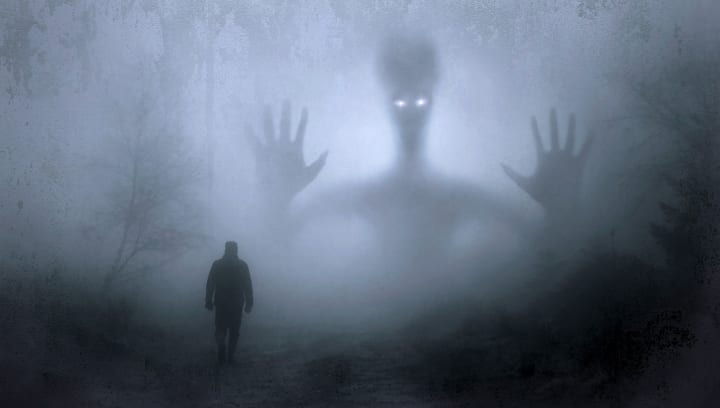
Hey, have you ever thought about what happens when our everyday emotions like anger and anxiety become too intense? It's a fascinating topic, but today, we're going to talk about something that's often overlooked: boredom. While it might not seem like the most exciting topic at first, understanding boredom is actually incredibly important. And to understand boredom, we first need to take a look at monotony.
Imagine a snail going about its daily business when suddenly, someone picks it up and shakes it. As a natural response, the snail would retreat into its shell. However, what's noteworthy is that if the shaking continues for an extended period, the snail would stop responding altogether.

Even a bird would be startled when perched on top of a rustling branch. However, after experiencing this repeatedly, it eventually becomes accustomed to it. Similarly, rats in a maze learn to explore new paths to reach their food instead of always following the same route. This behavior is not unique to animals but is also observed in humans.

During World War II, the Royal Air Force conducted research to investigate why anti-submarine patrol radar operators sometimes missed detecting U-boats. The study found that the operators were often working alone, staring at the radar screen for prolonged periods, and their efficiency started to decline within thirty minutes. As a result of the study's findings, the radar operators' work schedules were adjusted to improve their performance.

An experiment conducted by psychologist Hebb at McGill University.
In this study, we'll explore the effects of complete sensory deprivation and its impact on our minds and body. We'll examine a classic experiment conducted by psychologist Hebb at McGill University back in 1951. The study aimed to investigate the state of ultimate boredom, where nothing happens, and all senses are cut off.
Male university students were recruited as participants and received a compensation of $20 per day. The only requirement was for them to lie down on a comfortable bed in a well-lit chamber, 24 hours a day, for as long as they wished, with breaks only for meals and visits to the restroom. To impede their senses, they wore plastic visors, cotton gloves, and cardboard cuffs that extended beyond their fingertips. Furthermore, they used a U-shaped foam rubber pillow to restrict their hearing ability. Additionally, the continuous sound of the air conditioning machinery covered up any faint sounds. Data were gathered through interviews conducted with the participants after they completed their isolation.
So, what happened when they were in isolation?
The subjects initially focused on their studies, the experiment, and their personal issues. As time passed, they started to recall past events, their loved ones, and friends as a way to occupy themselves. A few tried to recollect every detail of the movies they had watched. Some imagined traveling from one known location to another, picturing all the events of the journey. Several participants engaged in a repetitive counting exercise, steadily increasing the numbers into the thousands.
After a certain point, the subjects' mental capacity would reach its limit, causing them to struggle to concentrate. They would then eventually become resigned to allowing their minds to wander. As one subject expressed, their thoughts became overwhelmed with "sounds and colors", leaving them unable to control their mind or come up with new thoughts. Some subjects experienced periods of blankness where they seemed to stop thinking altogether.
Over time, many subjects began to have visual experiences. One participant, for example, repeatedly saw a mental image of a rock beneath a tree's shade, while another couldn't shake off pictures of babies. A few subjects appeared to be in a dream-like state even when awake.
Their initial hallucinations were simple, manifesting as spots, lines, and basic shapes. Subsequently, these visions grew more intricate and included abstract patterns reminiscent of wallpaper designs, as well as recognizable figures like rows of small, yellow creatures with black caps and open mouths. Initially, those affected were intrigued and entertained by these images, finding them a welcome distraction from boredom.
However, as the hallucinations intensified, they became disconcerting and even interfered with their sleep. The visions were so realistic that they appeared like genuine photographs, and the subjects found themselves unable to control what they saw. Despite attempts to alter the images, the same pictures persisted, resulting in eye fatigue and distress among the subjects.
During the experiment, all human senses were being investigated, which meant that the participants' hallucinations were not limited to just visual experiences. Some of them reported hearing conversations while others heard a music box playing repeatedly.
One person even saw the sun rising over a church and heard a choir singing in full stereophonic sound. The situation took a spooky turn when some participants claimed that they felt afraid of seeing ghosts for several days following the experiment. This fear was likely triggered by the escalation of their experiences, as they progressed from simply seeing and hearing things to actually feeling them.
The participants in the study reported a sensation of having another body lying beside them, with some even experiencing their bodies overlapping and partially occupying the same space. Others described an out-of-body experience, where they felt as though their minds were detached from their bodies, with one person describing their mind as feeling like a "ball of cotton wool floating above my body," and another feeling like "something seemed to be sucking my mind out through my eyes."
Upon emerging from isolation, the participants noted changes in their visual perception, with objects appearing curved and near things appearing larger while far things seemed smaller.
Brainwave activity also showed the presence of slow waves that are typically observed during sleep, despite the participants being awake. Outwardly, the participants were restless and sought stimulation, attempting to distract themselves through activities like whistling, singing, reciting poetry, and even trying to engage the experimenters in conversation.
After completing the experiment, the remaining question that requires an answer is the significance of the findings. Essentially, the study demonstrates that the brain's performance deteriorates, leading to behavioral abnormalities.
Furthermore, altering the sensory environment appears to be a critical aspect for humans, particularly for those employed in tedious and hazardous jobs, such as truck drivers. These individuals may experience hallucinations after several hours on the road, such as perceiving animals running across the road, resulting in frequent accidents.
About the Creator
Kamya
We should enjoy every moment fully, fall in love, make the most of our time, and live without regret. We should cherish the fact that there are still many moments in life that we have yet to experience for the last time.






Comments
There are no comments for this story
Be the first to respond and start the conversation.